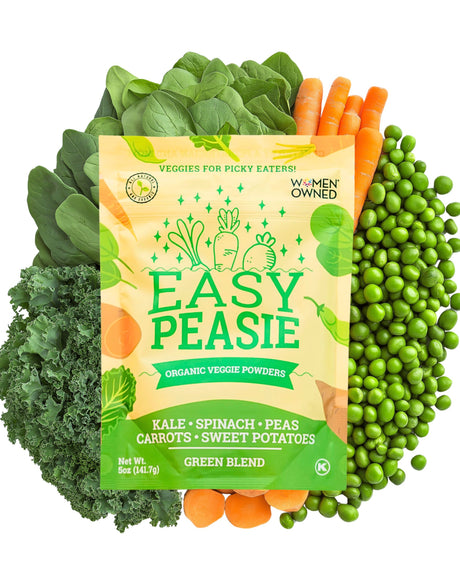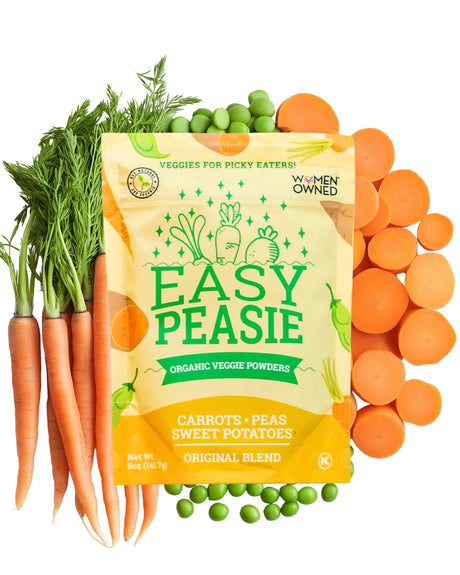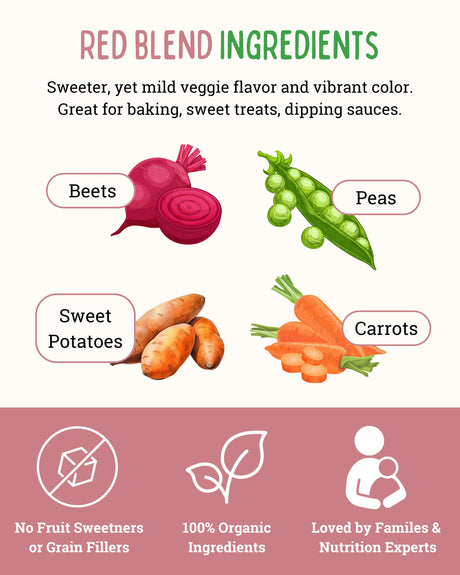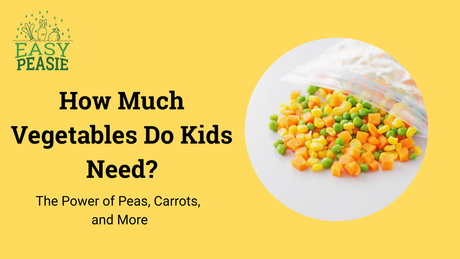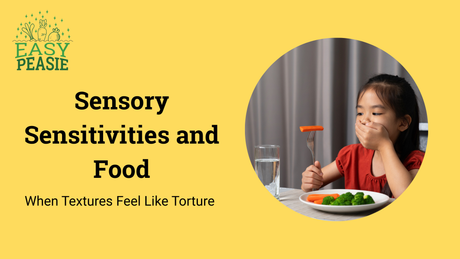Importance of Teaching Kids About Portion Sizes
Understanding portion sizes is crucial for children to develop a healthy relationship with food and maintain optimal health.
By learning about portion sizes, children can avoid overeating and better regulate their food intake, reducing the risk of obesity and related health issues later in life.
Overview of Challenges Associated with Portion Control in Children
Children face various challenges when it comes to portion control, including difficulty recognizing appropriate portion sizes, the influence of external factors like advertising and peer pressure, and the availability of oversized food portions in today's society. These challenges can contribute to unhealthy eating habits and make it harder for children to maintain a balanced diet.
Providing Practical Strategies
The goal of this blog is to equip parents and caregivers with practical strategies for teaching kids about portion sizes in a way that is informative, engaging, and conducive to fostering healthy eating habits. By implementing these strategies, families can work together to promote balanced nutrition and support children's overall health and well-being.
Age-Appropriate Portion Guidelines
Provide Age-Specific Portion Guidelines for Children
Age-specific portion guidelines help parents and caregivers understand how much food children of different ages should consume to support their growth and development.
For example, toddlers aged 1-3 years typically require smaller portions compared to school-age children or teenagers. Providing clear guidance on appropriate portion sizes ensures that children receive adequate nutrition without overeating or undereating.

Discuss Factors Influencing Portion Sizes, Such as Activity Level and Growth Stage
Portion sizes for children can vary based on factors like their activity level and growth stage. Active children who engage in regular physical activity may require larger portions to fuel their energy needs. On the other hand, children who are less active may need smaller portions to avoid consuming excess calories.
Additionally, during growth spurts, children may experience increased hunger and require larger portion sizes to support their growing bodies. Understanding these factors allows parents to adjust portion sizes accordingly to ensure their child's nutritional needs are met.
Offer Visual Aids or Tools to Help Children Understand Portion Sizes, Like Using Hand Measurements or Portion Plates
Visual aids and tools can be invaluable resources for teaching children about portion sizes in a way that's easy to understand and apply. Using hand measurements, such as equating a serving of protein to the size of their palm or a serving of grains to their fist, provides a practical and relatable way for children to gauge portion sizes.
Similarly, portion plates with divided sections for different food groups help children visualize balanced meals and understand the appropriate proportions of each food group. These visual aids empower children to make healthier choices and develop lifelong habits of mindful eating.
Portion Awareness Activities
Share Interactive Activities to Help Children Develop Awareness of Portion Sizes
Engaging children in interactive activities is a fantastic way to help them understand portion sizes in a hands-on manner. One activity involves using measuring cups and spoons to portion out different foods during meal preparation.
Children can practice scooping out appropriate serving sizes of grains, fruits, vegetables, and proteins, helping them visualize portion sizes and develop a sense of portion awareness. Another fun activity is creating portion size posters together, where children cut out pictures of various foods from magazines and arrange them according to appropriate portion sizes on a poster board.
Offer Games or Quizzes to Make Learning About Portion Sizes Fun and Engaging
Making learning about portion sizes enjoyable can increase children's engagement and retention of the information. Consider organizing a portion size scavenger hunt, where children search the kitchen for items that represent standard serving sizes of different foods. Alternatively, create a portion size quiz with questions about how much of each food group constitutes a serving size. Incorporating games and quizzes into the learning process adds an element of excitement and encourages children to actively participate in understanding portion sizes.
Provide Real-Life Examples and Demonstrations to Illustrate Portion Sizes
Real-life examples and demonstrations are effective ways to help children grasp the concept of portion sizes. During meals, parents can use visual cues to show children what a proper portion size looks like.
For example, they can demonstrate that a serving of protein is about the size of their palm or that a serving of vegetables should fill half of their plate. Additionally, involving children in meal preparation allows them to see firsthand how different portion sizes translate to actual food servings. These practical demonstrations help children develop a better understanding of portion sizes and how they apply to everyday eating situations.
Creating Healthy Eating Environments
Discuss the Importance of Fostering a Positive Eating Environment at Home
Fostering a positive eating environment at home is crucial for instilling healthy eating habits, including appropriate portion control, in children. Creating a relaxed and enjoyable atmosphere during meals encourages children to focus on their food and recognize hunger and fullness cues. Avoiding pressure or coercion around eating and instead emphasizing enjoyment and satisfaction helps children develop a positive relationship with food and eating.
Offer Tips for Serving Appropriate Portion Sizes During Family Meals and Snacks
Serving appropriate portion sizes during family meals and snacks is essential for promoting balanced nutrition and healthy eating habits. Parents can use visual cues, such as dividing plates into sections for different food groups or using smaller plates and bowls, to guide portion sizes.
Encouraging children to serve themselves appropriate portions from shared dishes promotes autonomy and teaches them to listen to their hunger cues.

Highlight the Role of Parents and Caregivers in Modeling Healthy Portion Control Behaviors
Parents and caregivers play a crucial role in modeling healthy portion control behaviors for children. Demonstrating balanced eating habits, such as filling half the plate with fruits and vegetables and serving appropriate portions of protein and grains, sets a positive example for children to follow.
Additionally, avoiding oversized portions and mindless eating behaviors teaches children the importance of listening to their bodies and eating in moderation. By modeling healthy portion control behaviors, parents and caregivers empower children to make nutritious food choices and maintain healthy eating habits throughout their lives.
Practical Tips for Portion Control
Offer Practical Strategies for Controlling Portion Sizes
Controlling portion sizes can be made easier with simple yet effective strategies. One approach is to use smaller plates, bowls, and cups, which visually reduce portion sizes and help prevent overeating.
Additionally, measuring utensils can be invaluable tools for accurately portioning out foods, especially when cooking or serving meals at home. By becoming mindful of portion sizes and using appropriate serving ware, children can learn to enjoy balanced meals without overindulging.
Discuss Mindful Eating Techniques to Help Children Recognize Hunger and Fullness Cues
Mindful eating techniques can aid children in recognizing their hunger and fullness cues, ultimately promoting healthy portion control. Encourage children to eat slowly, savoring each bite, and paying attention to how their bodies feel as they eat.
Encouraging children to pause between bites and assess their level of hunger can prevent them from overeating and help them develop a deeper understanding of their own hunger and fullness signals.
Provide Guidance on Avoiding Oversized Portions When Dining Out or Eating Packaged Foods
When dining out or consuming packaged foods, oversized portions can contribute to excessive calorie intake and poor portion control habits. Encourage children to be mindful of portion sizes when eating out by sharing meals with family members or opting for smaller-sized portions. Similarly, when choosing packaged foods, encourage children to read nutrition labels and serving sizes to avoid consuming more than intended. Teaching children to be mindful of portion sizes in various settings empowers them to make healthier food choices and maintain balanced eating habits wherever they go.
Encouraging Balanced Choices
Emphasize the Importance of Balanced Meals and Snacks
Balanced meals and snacks are essential for providing children with the nutrients they need for growth and development. Encourage parents to incorporate a variety of food groups into each meal to ensure that children receive a diverse array of vitamins, minerals, and macronutrients. By emphasizing the importance of balance, parents can help children develop healthy eating habits that will last a lifetime.
Discuss the Benefits of Including a Variety of Food Groups in Children's Diets
Including a variety of food groups in children's diets offers numerous benefits. Each food group provides unique nutrients that are essential for different aspects of health.
For example, fruits and vegetables are rich in vitamins, minerals, and antioxidants, while protein sources like lean meats, beans, and dairy products provide essential amino acids for growth and repair. By encouraging children to consume a diverse range of foods, parents can ensure that they receive all the nutrients they need to thrive.
Offer Suggestions for Creating Balanced Meals that Include Appropriate Portion Sizes of Each Food Group
Creating balanced meals that include appropriate portion sizes of each food group is key to promoting healthy eating habits in children. Encourage parents to use the MyPlate model as a guide, aiming to fill half of their child's plate with fruits and vegetables, a quarter with lean protein, and a quarter with whole grains.
Additionally, incorporating healthy fats, such as those found in nuts, seeds, avocados, and olive oil, can further enhance the nutritional quality of meals. By providing practical suggestions and examples, parents can make it easier for children to enjoy balanced meals that support their overall health and well-being.
Involving Kids in Meal Preparation

Highlight the Benefits of Involving Children in Meal Planning and Preparation
Involving children in meal planning and preparation offers a multitude of benefits for their overall development. It fosters a sense of independence and responsibility, teaches them valuable life skills, and encourages them to develop a positive relationship with food. When children are actively involved in meal preparation, they are more likely to try new foods and develop a deeper appreciation for the effort that goes into making meals.
Offer Age-Appropriate Tasks for Kids to Help Them Understand Portion Sizes and Make Healthier Choices
Assigning age-appropriate tasks to children during meal preparation can help them understand portion sizes and make healthier choices. Younger children can assist with simple tasks like washing fruits and vegetables, stirring ingredients, or setting the table. Older children can take on more responsibility by helping to measure ingredients, chop vegetables, or assemble meals. By involving children in these tasks, parents can teach them about portion control and empower them to make informed decisions about their food choices.
Provide Tips for Making Mealtime a Collaborative and Educational Experience

Making mealtime a collaborative and educational experience can help children develop a positive attitude towards food and nutrition. Encourage parents to engage children in conversations about the different food groups, the importance of balanced meals, and the nutritional benefits of various foods.
Additionally, encourage families to experiment with new recipes and ingredients together, allowing children to express their preferences and explore different flavors. By making mealtime a fun and interactive experience, parents can instill healthy eating habits in their children that will last a lifetime.
Addressing Challenges and Overcoming Obstacles
Common Challenges in Teaching Kids About Portion Sizes
Teaching children about portion sizes can be met with various challenges, including resistance and confusion. Resistance may arise when children are accustomed to larger portions or perceive smaller servings as restrictive. Moreover, children may struggle to grasp the concept of portion sizes and their relevance to their dietary needs.
Solutions and Strategies for Overcoming Obstacles
Parents and caregivers can employ several effective strategies to overcome these challenges. Involving children in meal planning and preparation allows them to develop a better understanding of portion sizes and cultivates healthier eating habits.
Utilizing visual aids such as portion plates or food models helps make the concept of portion sizes more tangible for children. Additionally, encouraging children to listen to their hunger and fullness cues aids in determining appropriate portion sizes.
Encouragement and Support for Parents and Caregivers
Navigating the complexities of teaching kids about portion sizes can be daunting for parents and caregivers. It's crucial to provide them with encouragement and support as they endeavor to instill healthy eating habits in their children.
Assure parents that resistance from children is normal and that consistency and patience are essential. Foster a supportive community where parents can share experiences and seek advice from one another, creating a space for collaborative problem-solving and mutual support in promoting healthy eating habits.
Summary
In this blog, we've explored the significance of teaching kids about portion sizes to foster healthy eating habits. We've discussed the definition of portion sizes, the age-appropriate guidelines for children, and practical strategies for incorporating portion control into daily life.
Importance of Teaching Kids About Portion Sizes
Understanding portion sizes is crucial for children's overall health and well-being. By learning to recognize appropriate serving sizes, children can develop healthy eating habits that support their growth and development. Teaching kids about portion sizes empowers them to make informed food choices and maintain balance in their diets.
Encouragement for Implementation
I encourage other parents to implement the strategies outlined in this article to help their children develop a balanced approach to eating. By involving kids in meal preparation, using visual aids, and fostering a positive eating environment, parents can instill lifelong habits that promote health and wellness. Remember, consistency and patience are key, so stay committed to guiding your children toward a healthier relationship with food.
Leave your comments below; we love to hear from you! And don't forget to follow EasyPeasie for more veggie info and convo on YouTube, Facebook, and Instagram! ~ThePeas


